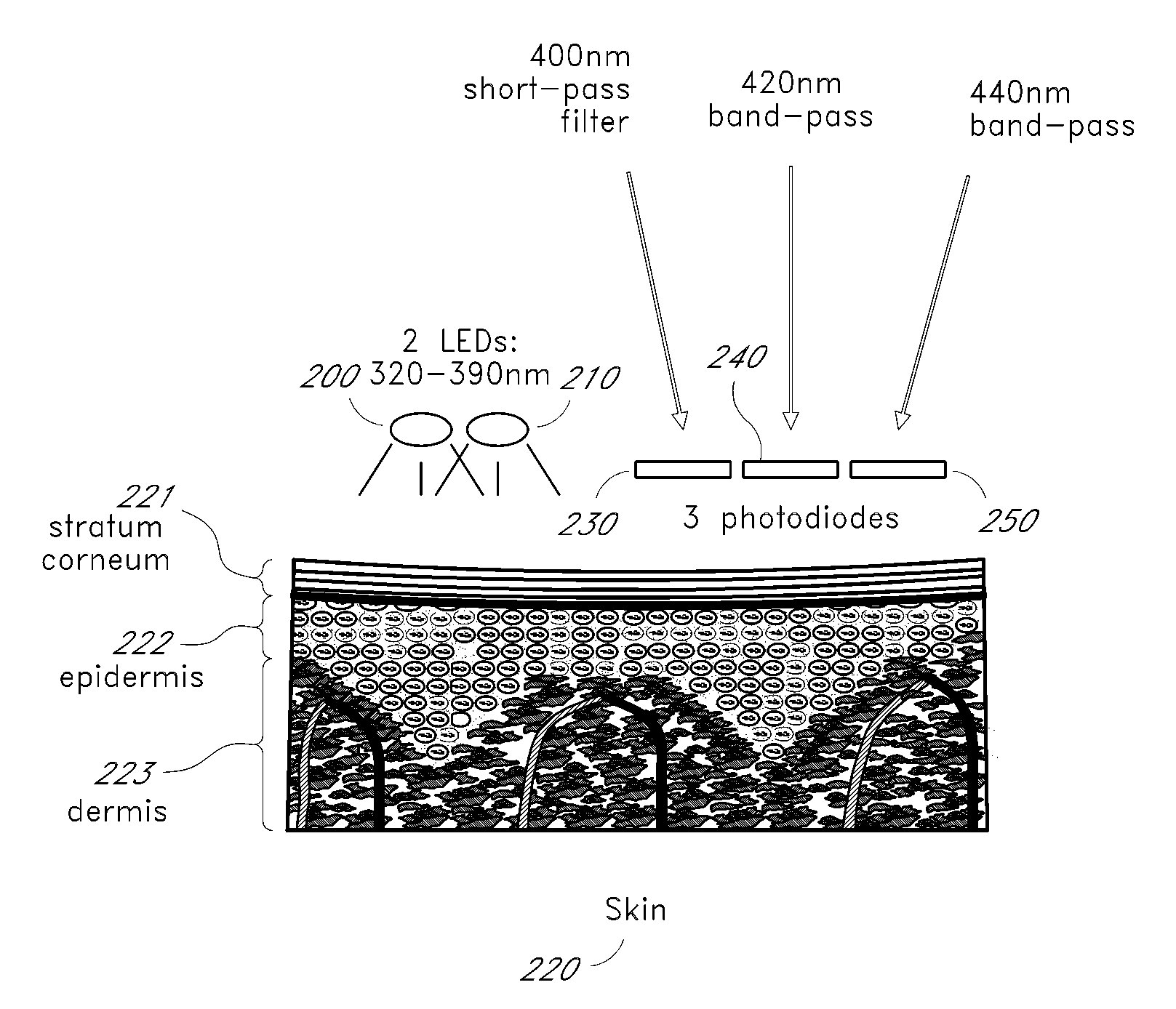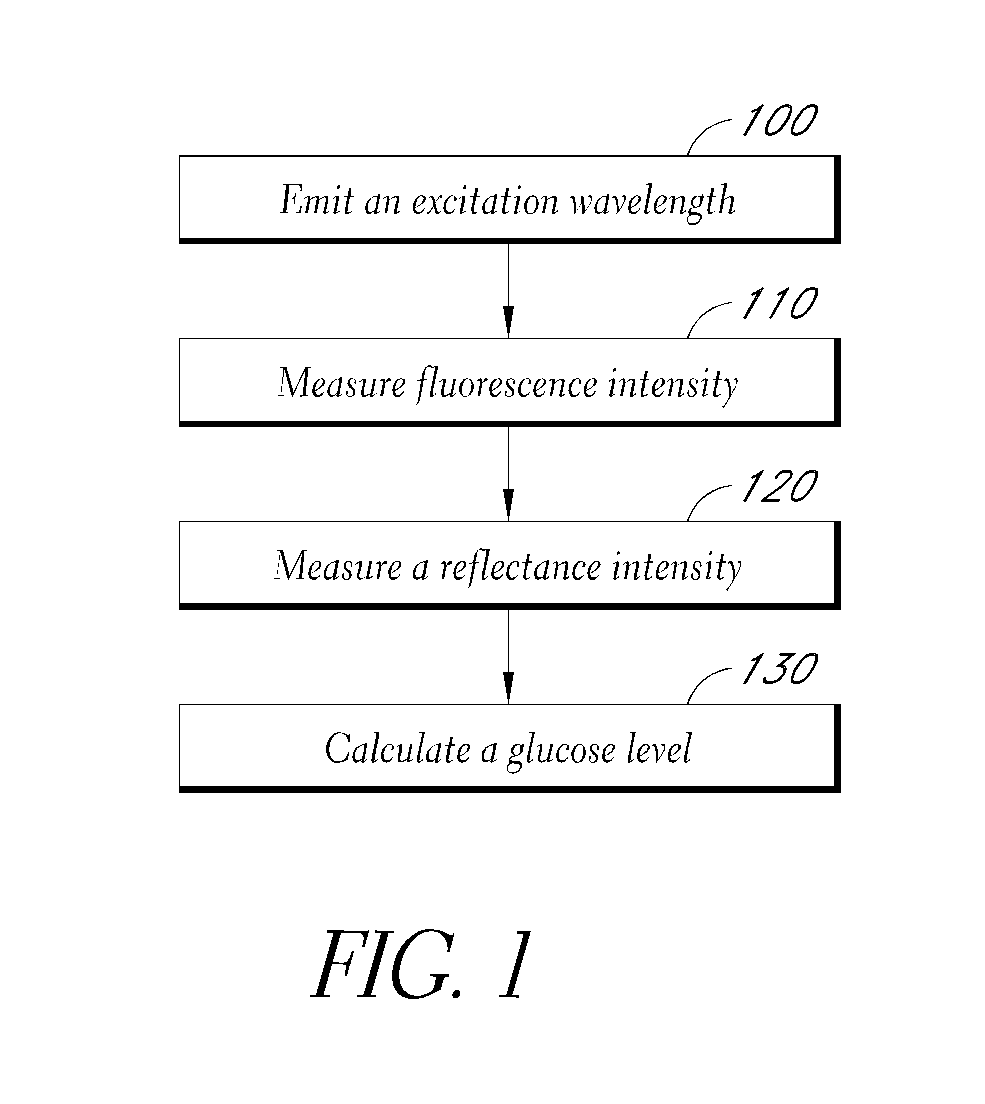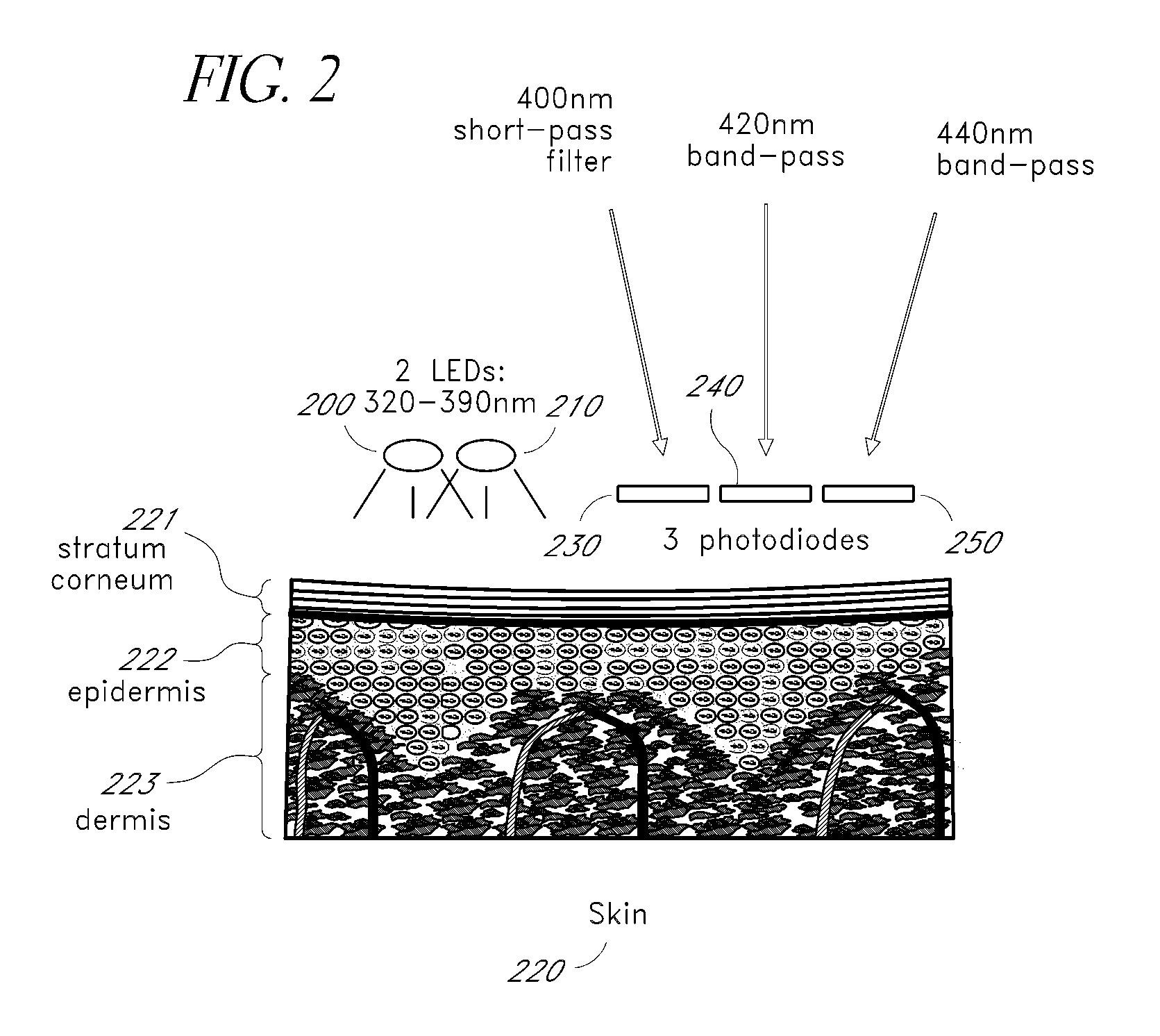Reflectance calibration of fluorescence-based glucose measurements
a fluorescence-based glucose and calibration technology, applied in the field of in vivo glucose measurement, can solve the problems of inability to demonstrate clinical testing viable technologies, painful self-testing forms, and obscure the relatively weak glucose signal, and achieve the effect of easy detection of fluorescen
- Summary
- Abstract
- Description
- Claims
- Application Information
AI Technical Summary
Benefits of technology
Problems solved by technology
Method used
Image
Examples
Embodiment Construction
[0021]Tissue fluorescence measurements are calibrated to account for instrument effects, which may include differences in source intensity, detector gain, molecule concentration, or measurement device location relative to the fluorescing molecule on the skin.
[0022]FIG. 1 depicts a method of measuring a glucose level. An excitation wavelength is emitted 100 to stimulate fluorescence and reflectance responses. A fluorescence intensity is measured 110. A reflectance intensity is measured 120. To obtain the most valuable results, the reflectance intensity measurement 120 and fluorescence intensity measurement 110 probe essentially the same volume or surface area. The tissue reflection measurement 120 varies with the instrument response of the system, as well as the molecule concentration and the location of the measurement device, in a manner that is directly related to the measured fluorescence intensity resulting from measurement 110 of the molecule. A first approximation of the relat...
PUM
 Login to View More
Login to View More Abstract
Description
Claims
Application Information
 Login to View More
Login to View More - R&D
- Intellectual Property
- Life Sciences
- Materials
- Tech Scout
- Unparalleled Data Quality
- Higher Quality Content
- 60% Fewer Hallucinations
Browse by: Latest US Patents, China's latest patents, Technical Efficacy Thesaurus, Application Domain, Technology Topic, Popular Technical Reports.
© 2025 PatSnap. All rights reserved.Legal|Privacy policy|Modern Slavery Act Transparency Statement|Sitemap|About US| Contact US: help@patsnap.com



